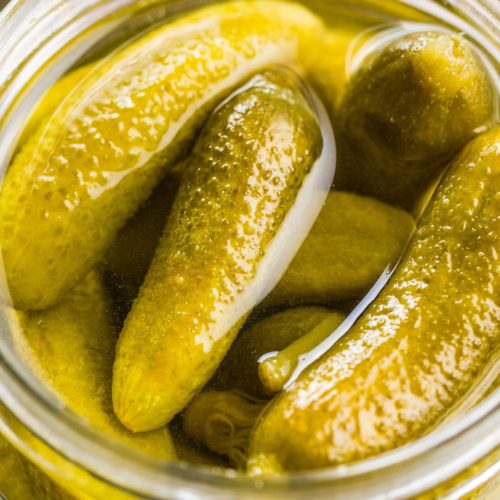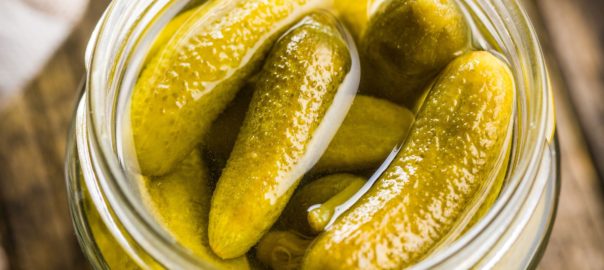In recent years, there has been a growing interest in lacto-fermented foods, including pickles, sauerkraut, kimchi, and other probiotic-rich recipes.
The traditional lacto-fermentation process uses lactobacilli, a beneficial microbe that converts starches and sugars in food into lactic acid, which preserves the food and promotes a healthy bacterial balance in the gut.
Challenges
Lacto-fermented foods can be an excellent addition to canned vegetables, providing a boost to digestive health. However, many commercial food processes don't allow for lacto-fermentation due to longer production time, increased interaction with the food, and shorter shelf life.
I've been canning and preserving for over 20 years. Quite frankly I've never understood why pickle manufacturers felt it necessary to add yellow #2 to pickles. It doesn't add anything to the flavor. If you want your pickles to be yellow just add turmeric.
To make your own lacto-fermented pickles at home, you don't necessarily need a fermentation crock; a 1-gallon glass jar and pickle weights can suffice. The key is to ensure the brine is strong enough to preserve the cucumbers until the lactobacilli take over the preserving process, and that the cucumbers are fully submerged in the brine.
Tips
Some individuals are concerned about lacto-fermenting without the use of whey. However, whey is not strictly necessary if the brine is at the right percentage. If you live in a hot climate and have trouble getting fermentation started due to air conditioning, adding 2 tablespoons of whey can help kick off the ferment.
To make your own whey, simply strain plain organic yogurt overnight in a lined colander in the refrigerator. In the morning, you will have creamy Greek-style yogurt and clear strained whey, which can be used for soaking beans, grains, and lacto-fermented foods.
Another traditional tip from a reader's grandmother is to add grape leaves to the jar to enhance lacto-fermentation and make your pickles crisp. This sounds like it could be a good idea, as grapes are known for their natural bacteria content, which can aid the fermentation process.
Recipe
Here is a classic lacto-fermented pickle recipe that you can try at home. This recipe is for a two-quart jar, but you can easily double the ingredients if you wish to make a gallon jar.

Lacto-fermented Pickles
Ingredients
- 4 large pickling cucumbers (only because this is what fit - if using baby cukes you may need more)
- 3 cloves of garlic, crushed, not peeled
- 2 bay leaves
- 1/2 t. celery seed
- 1/2 t. dill seed
- 1 quart of water
- 1 1/2 T. kosher salt
Instructions
- Sterilize the jar
- Wash the cucumbers
- Add spices to the jar
- Mix together water and salt until salt is completely dissolved (this is your brine)
- Pour brine over cucumbers and herbs
- Use pickle weights to hold down the cucumbers
- Loosely cover jar with wax paper and a ring or rubber band
- Let sit in a warm (not hot) dark place
- After 4 days you can cut off small pieces of pickle to taste
- When it tastes pickle-y enough you can put it in the refrigerator
- This will slow down but not completely stop the fermentation process
For those who want a faster option, quick refrigerator pickles are also a great alternative to store-bought pickles.


